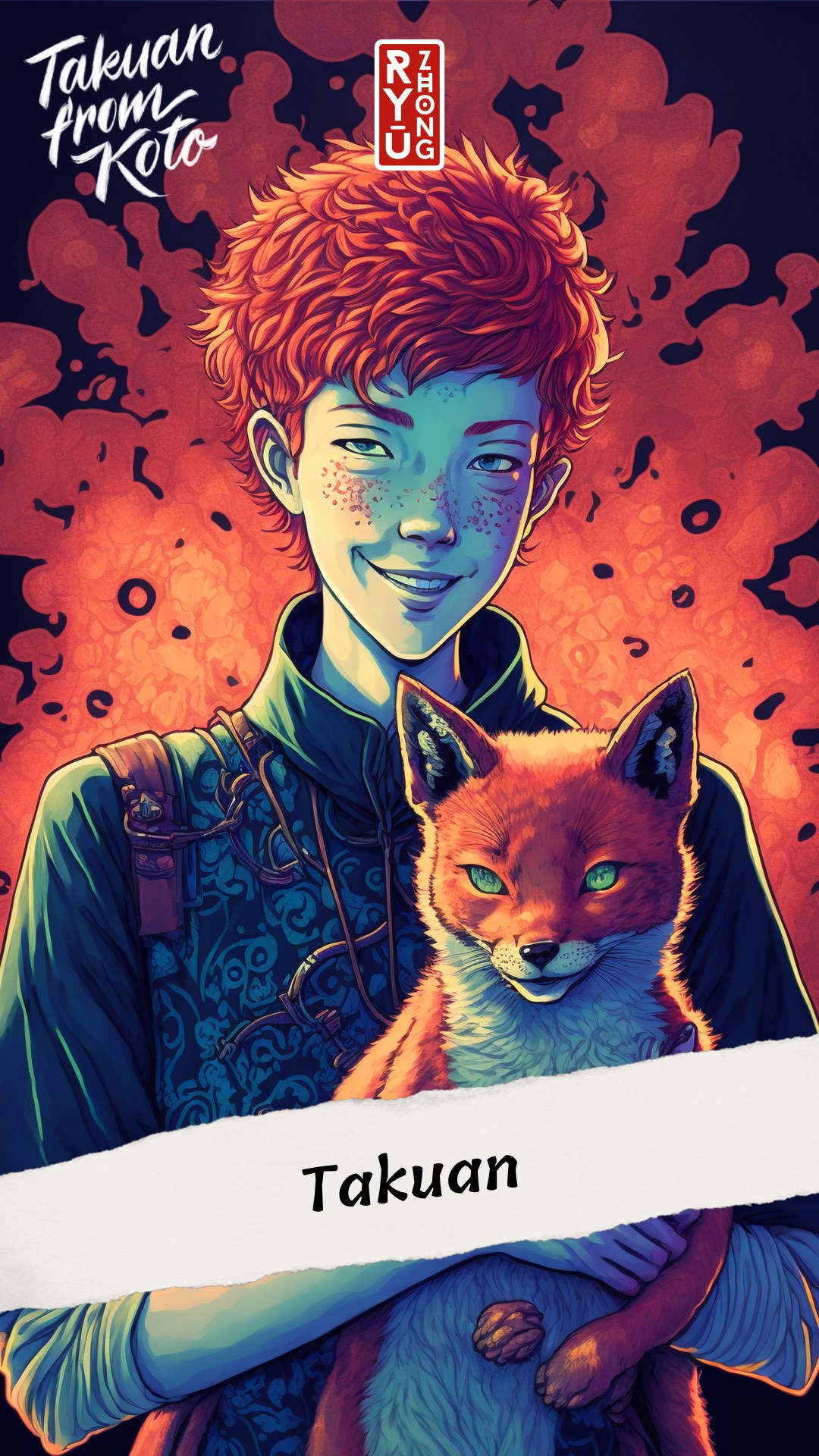
¶ Takuan from Koto
Earlier: Hatsukoi; later: Sung-Guan.
The runaway from the monastery, Takuan, appears before the reader as a teenager of around thirteen or fourteen years old, with red hair that he sometimes shaves off to pass himself off as a monk.
From a very young age, Takuan possessed cunning and restlessness, and during his time in the monastery, he learned how to use them for a good cause. Although this good cause was primarily for Takuan himself, only those who indulged in their vices – greed, anger, and ignorance – fell for his tricks.
¶ Novice of the White Mountain Monastery
We meet Takuan at the beginning of ‘The Prince of Blue Flowers,’ although we do not suspect it until the very moment when the future Takuan – then bearing the childhood name Hatsukoi – enters the White Mountain Monastery.
It was in this monastery that Takuan received his name. He was nicknamed Takuan after the heavenly marten, Ta-Guan, and he earned this name through his mischief and pranks, which he played on his fellow novices, monks, and even the abbots. He did this out of boredom, as he couldn’t sit still for long – and the monastic life simply does not go without prolonged sitting.
Therefore, it is not surprising at all that Takuan escaped from the monastery and set off to wander through Chinayindu accompanied by his friend, a fox cub named Jin.
If you want to find out about the adventures that befell Takuan, read the book called ‘The Prince of Blue Flowers,’ and then its sequels: ‘Hunters of Weredemons’ and ‘Envoys of Celestials.’
¶ Quotes
He quickly grew bored of repetitious and unadventurous work, and began to invent ways to entertain himself, just like he used to when he lived in the village. He started by learning the manners of each of the abbots, as well as of the kamunushi monks who lived in the monastery. He imitated them so well that he sometimes managed to deceive not only his novice brothers, but even the kamunushi themselves.
Once, someone fed the abbot’s favourite horse with clover to the extent that its sides swelled up, and when the abbot rode down to the village, it produced such wind that one of the villagers was carried away into the river and the rest fled, covering their noses with their sleeves.
Another time, birch firewood that had been dried in the sun was discovered to be soaked in a peat extract. As per usual for a cold evening, the novices threw a hefty pile of firewood into the basement hearth, from which warm air should have diffused throughout the chimneys. But instead of warm air, thick smoke billowed out, covering disciples, kamunushi monks, and even the abbots with soot.
Finally, it dawned on the abbots who was to blame for all the commotion. A senior samanera disciple was assigned to Hatsukoi, and from that time on the boy himself was called Takuan, in honour of the celestial marten Ta-Guan.
Takuan sat down in the meditation hall and closed his eyes. He had no intention of building a heavenly palace. He wondered how he could become a kamunushi – or at least a wandering komuso – without wasting much time. As per usual, the decision came to him quickly.
Takuan was so overjoyed at his enlightenment that he unclenched his fingers and fell head first onto the floor. Rubbing the bump on his forehead, he began to think about how else he could lead those who succumbed to the evil that they nourished themselves.